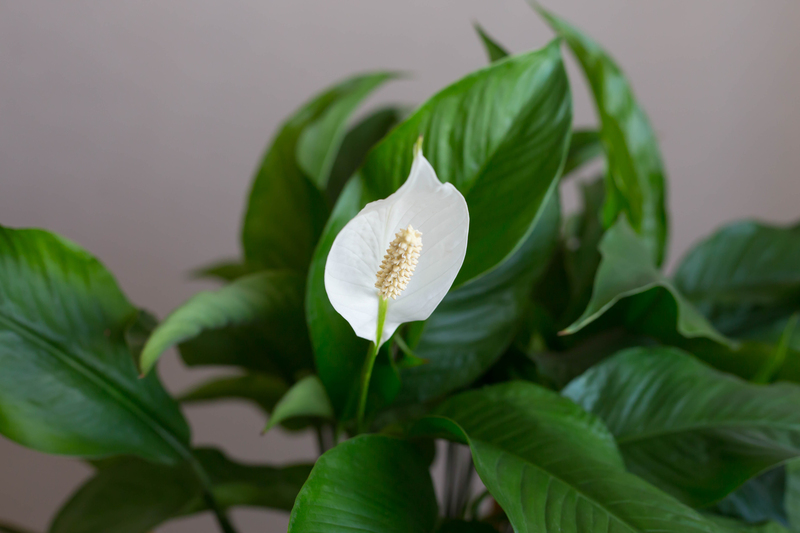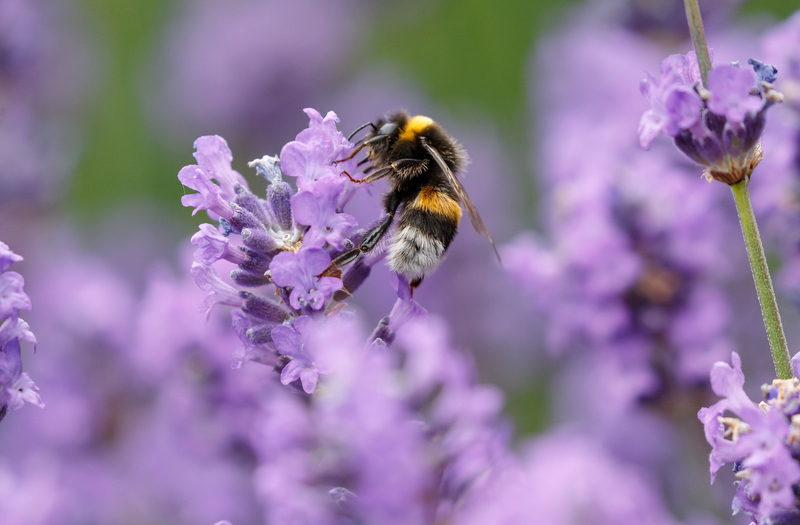Ensure Your Garden Remains Lush Through Winter
Posted on 30/08/2025
Ensure Your Garden Remains Lush Through Winter: Ultimate Guide to Winter-Proof Gardening
A beautiful, healthy, and vibrant garden in winter may seem like a dream reserved for warmer climates. However, with dedicated preparation, smart choices, and continuous care, you can ensure your garden remains lush through winter--regardless of your region. In this comprehensive guide, we will cover crucial winter gardening techniques, resilient plant selections, protective strategies, and practical pro-tips to preserve the vitality and allure of your outdoor haven throughout the cold months.
Why Gardens Struggle During Winter
Understanding the challenges winter presents is the first step to keeping your garden healthy in cold weather. Fundamentally, winter's issues spring from:
- Extreme cold temperatures that impede growth and may damage delicate foliage or roots.
- Freezing and thawing cycles, which can uproot smaller plants or cause soil heaving.
- Reduced daylight hours, slowing photosynthesis and plant metabolism.
- Frost and snow build-up that can break branches and compact soil.
- Water stress, as winter evaporation still occurs but ground moisture is less accessible to roots due to cold or frozen soil.

Planning Ahead: Preparing Your Garden for Winter Success
The true secret to a winter-proof garden lies in preparation. Taking action in late summer and fall helps your plants build strength and resilience ahead of winter's arrival. Here's how to plan:
1. Choose Hardy Plants and Shrubs
- Native species often handle winter best, thanks to local adaptation.
- Evergreen shrubs like boxwoods, hollies, and yews stay visually appealing all year.
- Winter-flowering plants such as hellebores, camellias, or witch hazels add color even in cold weather.
- Perennials such as ornamental grasses and sedums offer winter interest with their forms and textures.
*Selecting the right combination of these ensures your garden landscape remains lush and inviting--even as snow falls!*
2. Clean Up, But Not Too Much
- Remove diseased, dead, or pest-infested plant debris to limit overwintering problems.
- Leave some seed heads, stalks, and leaves to provide food and shelter for winter wildlife and natural mulch for your soil.
3. Soil Preparation and Protection
- Enrich soil with compost in the fall to boost nutrients and soil structure.
- Add a thick layer (2-4 inches) of organic mulch--such as wood chips or shredded leaves--around plants. This insulates roots and helps prevent soil erosion and temperature swings.
- Avoid heavy tilling or disturbance as it can disrupt natural insulation.
4. Water Wisely Before Winter Sets In
- Give your plants a deep watering before the ground freezes.
- This helps prevent winter desiccation, when plants lose moisture they can't replace from frozen soil.
- Water mid-day to allow time for absorption before temperatures dip at night.
Best Practices to Keep Your Garden Lush Through Winter
With key preparations done, you'll still need ongoing strategies to keep your garden vibrant in winter. Let's explore how to nurture your landscape despite the coldest months:
1. Winter Protection Techniques
- Mulching is essential--but don't pile mulch right against plant stems or trunks. Leave a gap to avoid rot or pest problems.
- Use burlap screens or windbreaks to shield sensitive plants from harsh winds and rapid temperature drops.
- Wrap trunks of young or thin-barked trees with tree wrap to protect from sunscald and frost cracking.
- Frame sensitive beds or prized perennials with cold frames or tunnel cloches for added warmth.
2. Caring for Evergreens in Winter
- Evergreens photosynthesize year-round, losing moisture even in dormancy--monitor soil moisture and water during dry spells when temperatures rise above freezing.
- Brush off heavy snow gently from conifer branches to prevent breakage.
- Apply anti-desiccant sprays to broadleaf evergreens to reduce leaf moisture loss.
3. Maintain Structural Interest in the Winter Garden
Even when blossoms fade, you can ensure your outdoor space stays attractive by planning structural elements:
- Highlight garden structures like arbors, trellises, benches, or birdbaths with lighting or strategic placement.
- Use plants with interesting bark color, texture, or shape (e.g., red-twig dogwood or contorted filbert) for all-season appeal.
- Leave ornamental grasses and seed heads in place; their frosty silhouettes create enchanting winter scenes.
4. Use Frost-Proof Containers and Raised Beds
- Select weather-resistant planters--ceramic or terra cotta may crack, but concrete, metal, and resin survive freezing better.
- Group containers together and insulate with bubble wrap, straw, or mulch for added cold protection.
- Elevate pots to avoid direct contact with frozen ground--this prevents root damage.
Smart Plant and Flower Choices for Winter Gardens
Give your landscape lasting vibrancy by selecting plants known for winter hardiness, visual interest, or late-season color. Here's your cheat sheet for a thriving winter garden:
Best Winter-Interest Shrubs and Trees
- Boxwood: Rich, dark green foliage year-round; easily shaped into hedges or accents.
- Holly: Shiny, evergreen leaves and vibrant red berries attract birds for a lively garden scene.
- Witch Hazel: Showy, fragrant flowers bloom on bare stems, providing unique winter beauty.
- Red-twig and Yellow-twig Dogwood: Their colorful bare branches add a bold statement against snow.
- Dwarf Alberta Spruce: Petite conifer with dense, green needles ideal for small gardens and containers.
Cold-Hardy Perennials and Groundcovers
- Hellebores (Lenten Rose): One of the few perennials to flower in late winter with nodding, resilient blooms.
- Bergenia (Pigsqueak): Glossy evergreen leaves turn reddish in winter; produces early spring flowers too.
- Sedum 'Autumn Joy': Spent flower heads and fleshy leaves form a striking winter silhouette.
- Ajuga: Dense, evergreen mat covers bare soil, reducing erosion and providing rich color.
Annuals for Colorful Winter Containers
- Pansies: Many varieties thrive in mild winters, offering cheerful colors between frosts.
- Violas: Hardier siblings of pansies, famous for persistent blooms in cool weather.
- Cyclamen: Perfect for sheltered porches; their vibrant petals withstand chilly nights.
- Ornamental cabbage and kale: Frost-tolerant, their ruffled leaves create a visual punch in planters.
Essential Winter Garden Maintenance Routines
Regular care and quick response go a long way in keeping your garden lush during winter. Schedule these maintenance tasks:
Monitor for Pests and Disease
- Rodents and rabbits often seek food in gardens during winter--use wire mesh or repellents to protect young trees and woody plants.
- Inspect for fungal diseases, which can thrive in damp, sheltered conditions--remove affected plant parts promptly.
Watch for Water Needs
- Water on warmer winter days if rain or snow is scarce, especially for evergreens and new plantings.
- Avoid overwatering, which can cause root rot in soggy, poorly draining soil.
Prune at the Right Time
- Prune dormant deciduous trees and shrubs mid- to late-winter (before sap rises) to shape and remove dead wood.
- Wait to prune spring-blooming shrubs until after flowers fade, so you don't remove next season's buds.
Gently Remove Snow and Ice
- Shake drifting snow off delicate branches to prevent snapping.
- Never chip or break ice from branches, as this may do more harm than good.
Additional Tips for Keeping Your Garden Vibrant All Winter
- Incorporate garden lighting to showcase winter silhouettes and create evening ambiance.
- Use bird feeders and baths to attract colorful wildlife, adding movement and life to your landscape.
- Strike seasonal contrasts by pairing silver-foliage plants (like lamb's ear) with dark evergreens.
- Rotate container displays with festive branches, berries, and even cut conifers for instant winter cheer.

Common Mistakes to Avoid In Winter Gardening
- Neglecting fall preparation: Skipping crucial fall chores leaves your garden unprotected from the start.
- Excessive pruning: Cutting back too aggressively in autumn exposes growth points to cold damage.
- Insufficient mulching: Too little or poorly timed mulch application can leave plant roots vulnerable.
- Improper watering: Failing to water during winter thaws, especially for new plants, can lead to dehydration.
- Not choosing winter-hardy plants: Trying to keep tender annuals alive wastes effort and resources in freezing climates.
Conclusion: Enjoy a Lush Garden Year-Round
A lush, lively garden during the winter months is well within your reach. By embracing seasonal preparations, smart plant choices, and intentional maintenance, you'll not only keep your garden lush through winter but also look forward to a thriving landscape when spring returns.
In summary, start early, protect what you plant, and adapt to the shifting needs of your winter garden. With these actionable strategies, your home's landscape can be a true four-season sanctuary--one that stirs the senses and soothes the soul even in the darkest, coldest stretch of the year!
Don't let winter win--ensure your garden remains lush all season long!

